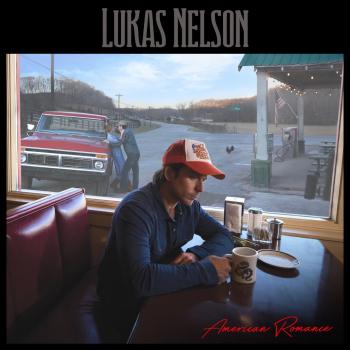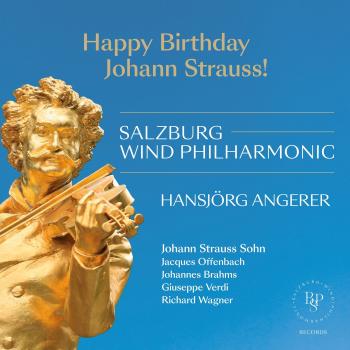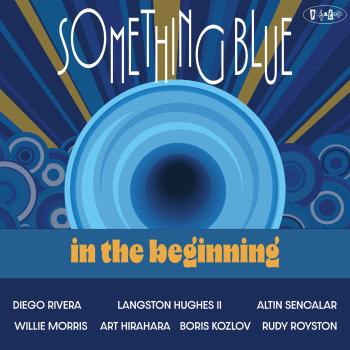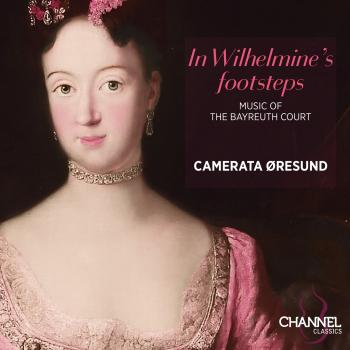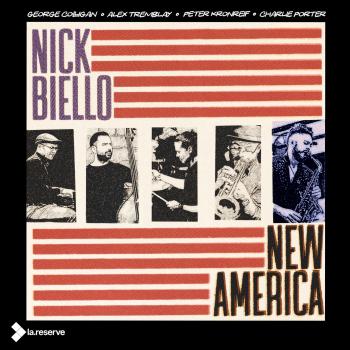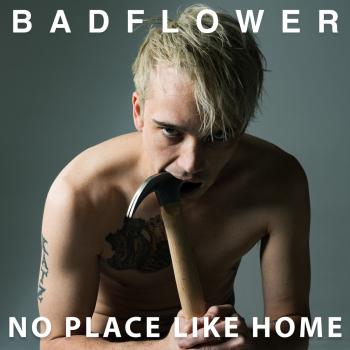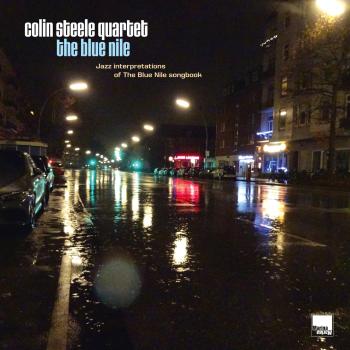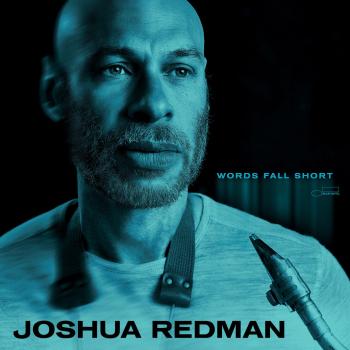
Morton Feldman, Erik Satie, John Cage: Rothko Chapel Kim Kashkashian, Sarah Rothenberg & Steven Schick
Album info
Album-Release:
2015
HRA-Release:
01.10.2015
Label: ECM
Genre: Classical
Subgenre: Chamber Music
Artist: Kim Kashkashian, Sarah Rothenberg & Steven Schick
Composer: John Cage (1912-1992), Morton Feldman (1926-1987), Erik Alfred Leslie Satie (1866-1925)
Album including Album cover Booklet (PDF)
I`m sorry!
Dear HIGHRESAUDIO Visitor,
due to territorial constraints and also different releases dates in each country you currently can`t purchase this album. We are updating our release dates twice a week. So, please feel free to check from time-to-time, if the album is available for your country.
We suggest, that you bookmark the album and use our Short List function.
Thank you for your understanding and patience.
Yours sincerely, HIGHRESAUDIO
- Morton Feldman (1926–1987): Rothko Chapel
- 1 Rothko Chapel 26:21
- Erik Satie (1866–1925): Gnossienne No. 4
- 2 Gnossienne No. 4 03:36
- John Cage (1912–1992): Four²
- 3 Four² 06:28
- Satie: Ogive No. 1
- 4 Ogive No. 1 03:04
- Cage: Ear for Ear (Antiphonies)
- 5 Ear for Ear (Antiphonies) 04:09
- Satie: Ogive No. 2
- 6 Ogive No. 2 03:07
- Gnossienne No. 1
- 7 Gnossienne No. 1 05:16
- Cage: Five
- 8 Five 05:07
- Gnossienne No. 3
- 9 Gnossienne No. 3 03:30
- Cage: In a Landscape
- 10 In a Landscape 09:41
Info for Morton Feldman, Erik Satie, John Cage: Rothko Chapel
Rothko Chapel addresses a network of musical relationships and inspirations. The album opens with Morton Feldman’s Rothko Chapel, named for the Houston, Texas multi-faith chapel built to house Mark Rothko’s site-specific paintings.
Feldman considered that his music lay “between categories, between time and space, between painting and music”, and described the score as his “canvas”. Amongst his most important influences were abstract painters, his friend Rothko prominent amongst them. (Rothko, for his part, yearned to “raise painting to the level of music and poetry”.) Feldman was also liberated by the freewheeling example of John Cage’s work. “The main influence from Cage was a green light,“ Feldman said. „It was permission, the freedom to do what I wanted.“
Cage, the most relentless of 20th century experimentalists, didn’t acknowledge what he called an “ABC model of ‘influence’” but always had a special fondness for Satie, a musical inventor of good-humoured originality with whom he could identify. Kim Kashkashian negotiates the subtle, glowing textures of Feldman’s planes of sound, joined by Sarah Rothenberg on celeste, and supported by percussion and choir. Rothenberg, on piano, plays Satie’s Gnossiennes and Cage’s Inner Landscape, and the Houston Chamber Choir sings Cage’s Four, Five and more.
Kim Kashkashian, viola
Sarah Rothenberg, piano, celeste
Steven Schick, percussion
Sonja Bruzauskas, mezzo-soprano
Lauren Snouffer, soprano
Houston Chamber Choir
Robert Simpson, conductor
Kim Kashkashian
one of the preeminent artists of ECM New Series, has devoted herself to Kurtág’s oeuvre for viola for more than 20 years and, as Wolfgang Sandner notes in the booklet to this disc has developed a remarkable rapport for the relation between compositional fabric and sonic nuance when performing it. Already in the early 1990s Kashkashian was recording Kurtág’s works for ECM, including the solo cycle “Jelek” which the composer revised with and for her, and “Neun Stücke für Viola solo”, pieces subsequently integrated into the ongoing “Signs, Games and Messages”. She has also recorded Kurtág’s early Movement for Viola and Orchestra on a disc addressing modern Hungarian composition (Eötvös/Bartók/Kurtág) with the Netherlands Radio Chamber Orchestra.
Kim Kashkashian, internationally recognized as a unique voice on the viola, was born of Armenian parents in Michigan.
Major influences during her studies were Walter Trampler and Karen Tuttle at the Peabody Institute in Baltimore and at the Marlboro Music Festival where she worked intensively with Felix Galimir. Kashkashian first gained international recognition as recipient of the Pro Musicis Award, and as a prize winner in the Tertis and ARD Munich International Competitions, which led to a creative association with the Lockenhaus Festival led by Gidon Kremer. She has appeared as soloist with the major orchestras of Chicago, Cleveland, Berlin, Milan, London, Tokyo and Vienna, working with conductors including Nikolaus Harnoncourt, Zubin Mehta, Riccardo Muti, Christoph Eschenbach, Riccardo Chailly, Dennis Russell Davies and Franz Welser-Möst. Her recital appearances include the great concert halls of Vienna, Rome, Paris, Berlin, New York, Boston, San Francisco, Cleveland, Philadelphia, and London with her duo partners pianist Robert Levin, and percussionist Robyn Schulkowsky.
Kim Kashkashian’s quest for new directions and forms of music making is an active element of her musical life. Her work with the composers György Kurtág, Giya Kancheli, Krzysztof Penderecki, Ken Ueno, Betty Olivero, Tigran Mansurian and Peter Eötvös has extensively enriched the repertoire for viola.
After early recordings of Mozart’s Sinfonia Concertante and Divertimento with DGG and Sony, since 1984 her association with ECM Records has resulted in an extensive discography which includes the award winning Brahms sonatas, the complete Hindemith sonatas, the concertos of Bartók, Eötvös, Kurtág, Berio, Kancheli, Olivero and Mansurian, and Asturiana, songs from Spain and Argentina. Kim Kashkashian resides in Boston and holds a position teaching viola and chamber music at the New England Conservatory of Music.
Sarah Rothenberg
Noted for her “power and introspection” (The New York Times) and “heart, intellect and fabulous technical resources” (Fanfare), pianist Sarah Rothenberg has served as artistic director of Da Camera since 1994. Ms. Rothenberg has one of the most distinguished and creative careers of her generation. She has received international acclaim as solo recitalist and chamber musician, and the innovative programs that she conceives and directs have been enthusiastically received by audiences across America and in Europe. She has been a frequent performer on Lincoln Center’s Great Performers series in New York, as well as appearing at London’s Barbican Centre, The Aldeburgh Festival (England), The Cervantino Festival (Mexico), Teatro Municipale (Santiago, Chile) and the Library of Congress. Solo recital appearances include The Concertgebouw in Amsterdam, Palais des Beaux-Arts in Brussels, Washington’s Kennedy Center, The Music Academy of Cracow, The Getty Museum in Los Angeles and New York’s 92nd Street Y and Miller Theater. Ms. Rothenberg received the Medal of Chevalier in the Order of Arts and Letters by the French government in 2000. In 2006, Ms. Rothenberg made her debut at the prestigious Gilmore Piano Festival. She also presented her latest Da Camera Production, Epigraph for a Condemned Book, a solo recital interweaving the music of Chopin with poetry, video and recorded voices, at La Jolla Music Society, the Hancher Auditorium series at University of Iowa and Kravis Center in West Palm Beach. Two performances at the New Haven International Festival of Arts and Ideas included another original production conceived and directed by Ms. Rothenberg, St Petersburg Legacy. In January 2006, Ms. Rothenberg made her debut as soloist with the Houston Symphony and maestro Hans Graf in a celebratory concert marking the 250th anniversary of Mozart’s birth.
Ms. Rothenberg has conceived and directed numerous original performance works for Da Camera of Houston, including the celebrated Music and the Literary Imagination series linking music to the works of Proust, Kafka, Mann, Akhmatova and others. Following their premieres at Houston’s Wortham Center, these programs have been presented across the United States and in Europe, and have been the subject of feature articles in the national press and arts publications, establishing Da Camera as one of the nation’s leaders in innovative programming. In addition, she has created and performed concerts linking music to the visual arts for exhibits at The Menil Collection, Museum of Fine Arts, Houston and The Jewish Museum of New York: Surrealism, Kandinsky and The Blue Rider, Malevich and The Musical World of Paul Klee, among others. Ms. Rothenberg also conceived and performed in the Da Camera production Moondrunk, a chamber music/dance theatre piece with performance artist John Kelly, featuring Schoenberg’s Pierrot lunaire, that inaugurated Lincoln Center’s New Vision series in January 1999 and was hailed by American Theatre magazine as “the birth of a new genre.”
Ms. Rothenberg’s discography includes Fanny Mendelssohn’s virtuosic piano cycle, Das Jahr, (Arabesque), for which she received the Best Solo Classical Recording Award from the Association of Independent Recording Companies in 1996; Rediscovering the Russian Avant-Garde 1912-1925: Lourie, Roslavetz and Mosolov (GM Recordings), and Shadows and Fragments: Piano Music of Brahms and Schoenberg (Arabesque). Her performances on Da Camera’s first recording release, Heartsounds: The Chamber Music of George Tsontakis (Koch), have been met with critical acclaim. Da Camera’s most recent release features works of American composer Charles Wuorinen, including the Da Camera-commissioned Ashberyana.
Prior to coming to Houston, Ms. Rothenberg was co-founding artistic director of the influential Bard Music Festival in New York. She was member pianist of the Da Capo Chamber Players from 1985-94, with whom she made numerous recordings, including the “New York Times’ Choice CD” of Schoenberg’s Pierrot lunaire(Bridge), and she has premiered over 75 new works. As chamber musician she has collaborated with members of the American, Brentano, Emerson, Schoenberg, St. Lawrence and Juilliard string quartets, among others. A popular public speaker on musical, literary and cultural issues, Ms. Rothenberg’s writings have appeared in The Musical Quarterly, Chamber Music, The Crisis of Criticism (New Press), Keyboard Magazine, World Policy Journal, Nexus (The Netherlands) and the literary journal Conjunctions. She studied at The Curtis Institute of Music with Seymour Lipkin and Mieczeslaw Horszowski, and in Paris with Yvonne Loriod-Messiaen. Other important coaches were Artur Balsam, Felix Galimir and Leon Fleisher. She lives with her husband and two children in Houston and New York.
Booklet for Morton Feldman, Erik Satie, John Cage: Rothko Chapel

